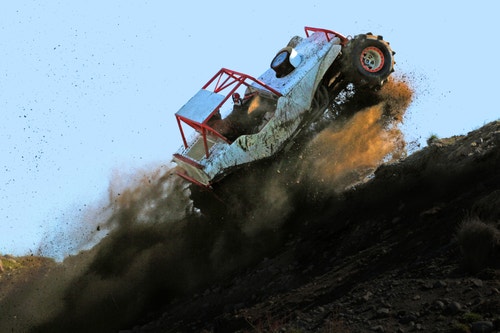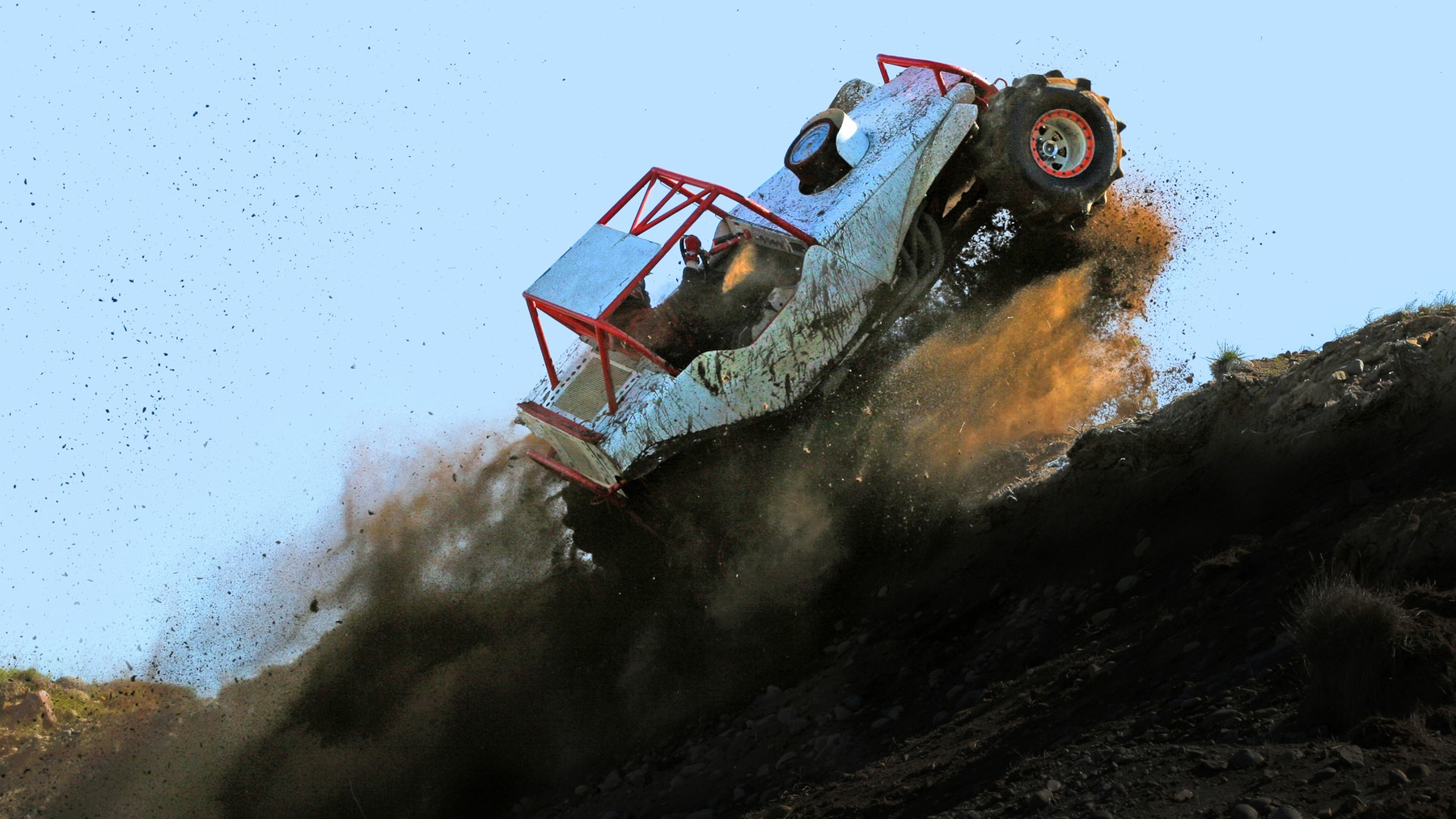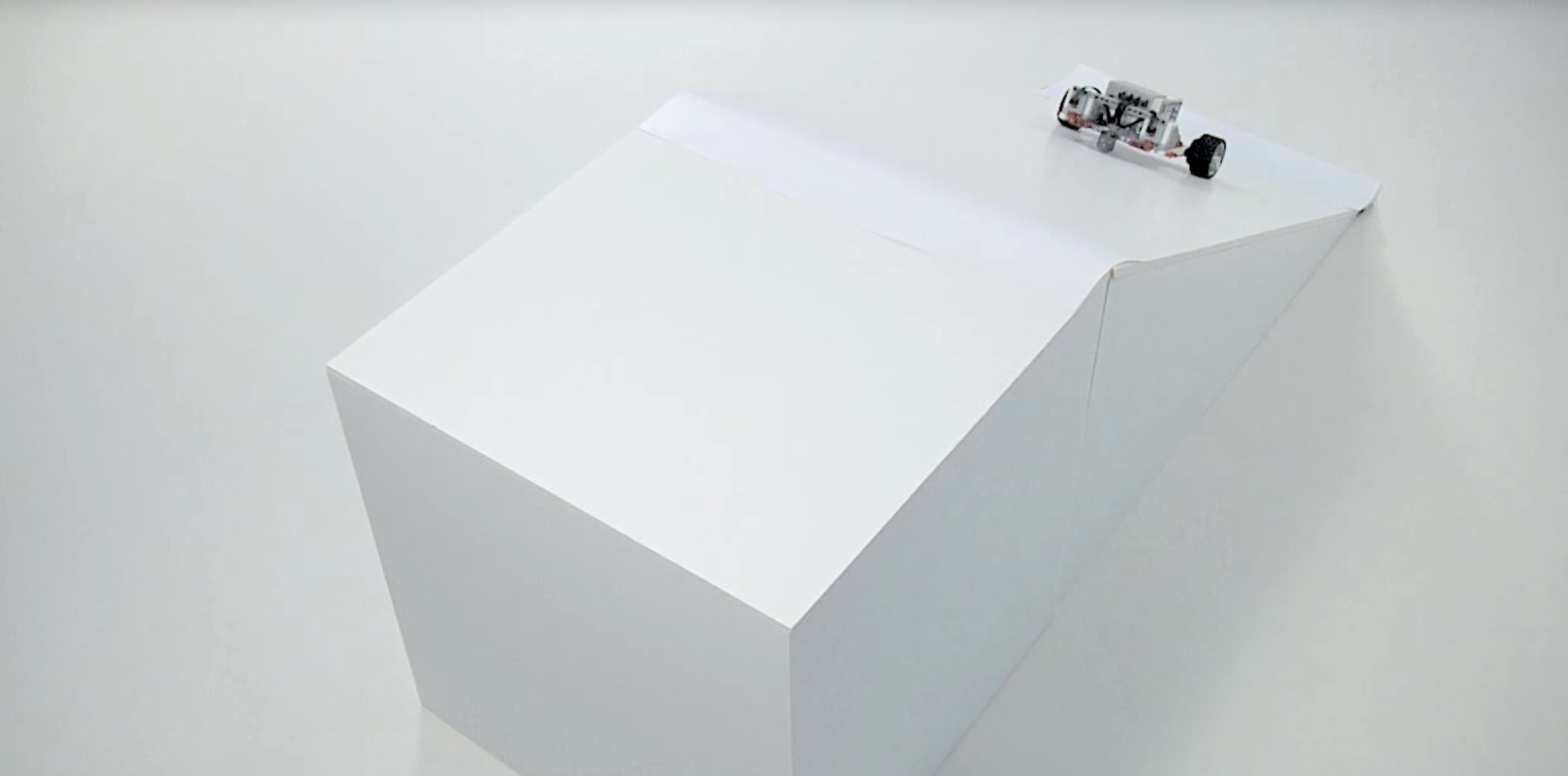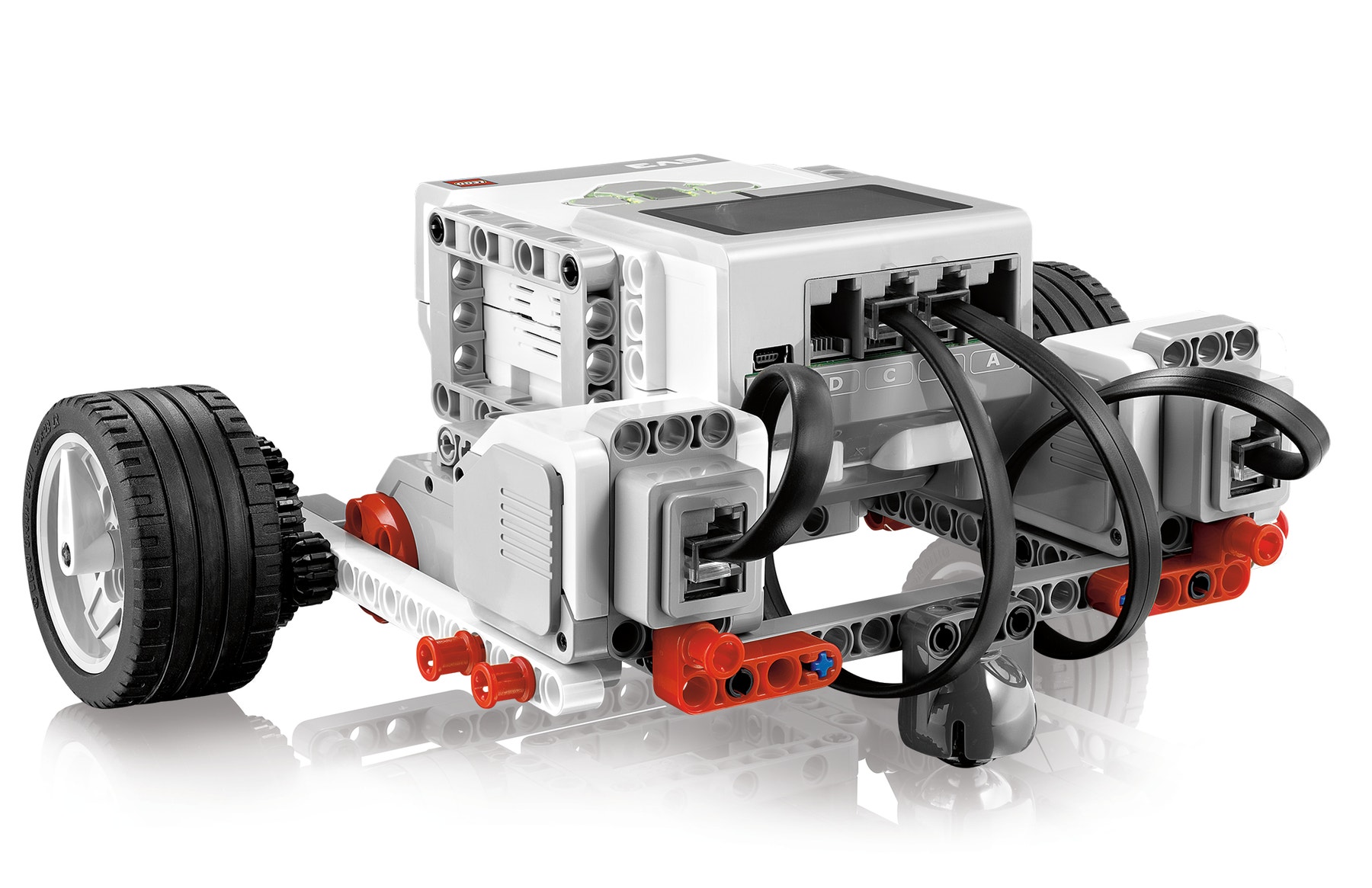Drive Up a Slope
Design, build, and program a robot that can move up the steepest incline possible.

Lesson Plan
1. Prepare
- Read through the student material in the EV3 Classroom App.
- You’ll need a long board or foam board to construct the ramp; and books, blocks, or other objects to adjust the incline for this lesson.
- Use a protractor to measure the incline in degrees, or a measuring tape to measure the incline by rise over run.
- To ensure a fair competition, make sure that each EV3 Brick has a fully charged EV3 Rechargeable Battery or fresh batteries.
- If you don’t have double-block class time, plan to run this lesson over multiple sessions.
Part A
2. Engage (10 Min.)
- Use the ideas in the Ignite a Discussion section below to engage your students in a discussion related to this lesson.
- Explain the project brief.
- Split your class into pairs.
3. Explore (35 Min.)
- Have each pair of students brainstorm ideas for designing a robot that can drive up a steep incline.
- Encourage them to create multiple prototypes, exploring both building and programming.
Part B
4. Explain (10 Min.)
- Have each team try to drive up the ramp at least three times, and record their results.
- Make sure they can create their own testing tables.
5. Elaborate (35 Min.)
- Let them continue to work on their robots until they’re ready to complete the challenge.
- Don’t forget to leave some time for cleanup.
6. Evaluate
- Give feedback on each student’s performance.
- Evaluate the creativity of their solution and how well their team worked together.
- You can use the assessment rubrics provided to simplify the process.
Ignite a Discussion
Formula Off Road is a competition in which drivers compete on extreme terrain, including steep hills. Driving up a steep incline may seem like a silly thing to do, but building a vehicle that can make it to the top requires some serious knowledge of torque, gears, and friction. The competition was invented in Iceland to raise money and awareness for rescue teams, who must overcome extreme terrain to save lives.

Use these questions to engage your students in a discussion about driving up an incline:
- How would you define a steep incline?
- Can you think of any situations where being able to drive up a steep incline would be useful?
Project Brief
Design, build, and program a robot that can move up the steepest incline possible.
Here’s a sample solution that meets the project brief criteria:

Building Tips
Open-Ended Solutions
This project is designed so that every team can have a unique solution. Use these questions to help teams brainstorm ideas for solving the project brief:
- How can gears be used to increase motor power?
- How does the need to move up an incline affect the design of your robot?
Setting Up the Adjustable Ramp
To create an adjustable ramp, use a long board or foam board that’s about 1 meter long. Use books, blocks, or other objects to adjust the incline.
Running the Test
As they’re testing their solutions, remind your students of the following:
- Record the trial number, incline angle, gear ratio, and motor power in a testing table. Make sure to leave enough space to record other observations.
- Test your robot on at least three different incline angles.
- Test after each adjustment to determine its effect.

Example Solution
This example solution meets the project brief criteria:
Coding Tips
Solution Program

Differentiation
Simplify this lesson by:
- Working with your students to help them figure out how to gear down to increase the mechanical advantage of the motors
- Encouraging peer-to-peer learning and coaching
Take this lesson to the next level by:
- Challenging your students to see which team can drive up a steep incline the fastest
- Creating a ramp using a sturdy board with a slightly slippery surface
Assessment Opportunities
Teacher Observation Checklist
Create a scale that matches your needs, for example:
- Partially accomplished
- Fully accomplished
- Overachieved
Use the following success criteria to evaluate your students’ progress:
- Students designed a robot that meets the requirements of the project brief.
- Students understood how to use gearing to increase their robot’s torque.
- Students came up with creative solutions and considered multiple solutions.
Self-Assessment
Have each student choose the level that they feel best represents their performance.
- Bronze: I’ve created a robot that can move on a flat surface.
- Silver: I’ve created a robot that can go up a shallow incline (15 degrees).
- Gold: I’ve created a robot that can go up a steep incline (30 degrees).
- Platinum: I’ve created a robot that can go up a very steep incline (45 degrees).

Language Arts Extension
To integrate language arts skills development, have your students:
- Create a presentation or a video highlighting their robot’s features and performance
- Create a presentation explaining some important features of their program
Note: This will make for a longer lesson.
Career Links
Students who enjoyed this lesson might be interested in exploring these career pathways:
- Information Technology (Computer Programming)
- Manufacturing and Engineering (Pre-Engineering)
- Science, Technology, Engineering & Mathematics (Engineering and Technology)
Öğretmen Desteği
Students will:
- Build and program their own robot to move up the steepest incline possible
- Understand that the speed and power of a machine can be changed using mechanical and electrical power
LEGO® MINDSTORMS® Education EV3 Core Set
EV3 Classroom App
A long board (or foam board) to construct the ramp
Blocks, books, or other objects to adjust the incline
A protractor or measuring tape
NGSS
MS-ETS1-4
Develop a model to generate data for iterative testing and modification of a proposed object, tool, or process such that an optimal design can be achieved.
Common Core
CCSS.ELA-LITERACY.SL.8.1
Engage effectively in a range of collaborative discussions (one-on-one, in groups, and teacher-led) with diverse partners on grade 8 topics, texts, and issues, building on others’ ideas and expressing their own clearly.
CCSS.MATH.CONTENT.8.G.B.7
Apply the Pythagorean Theorem to determine unknown side lengths in right triangles in real-world and mathematical problems in two and three dimensions.
ISTE
4B
Students select and use digital tools to plan and manage a design process that considers design constraints and calculated risks.
7C
Students contribute constructively to project teams, assuming various roles and responsibilities to work effectively toward a common goal.
Öğrenci Materyali
Öğrenci Çalışma Kağıdı
Çevrimiçi bir HTML sayfası veya yazdırılabilir PDF olarak indirin, görüntüleyin veya paylaşın.